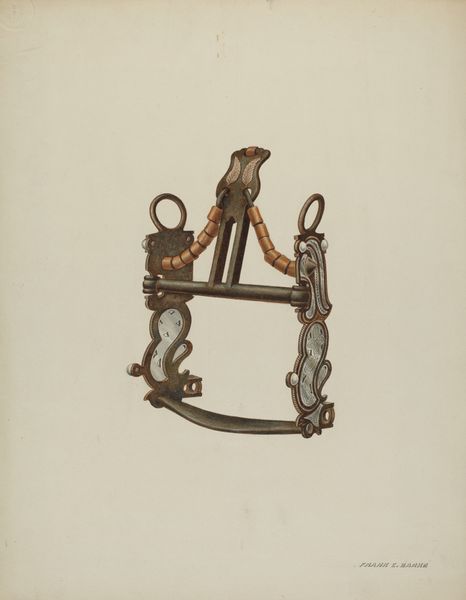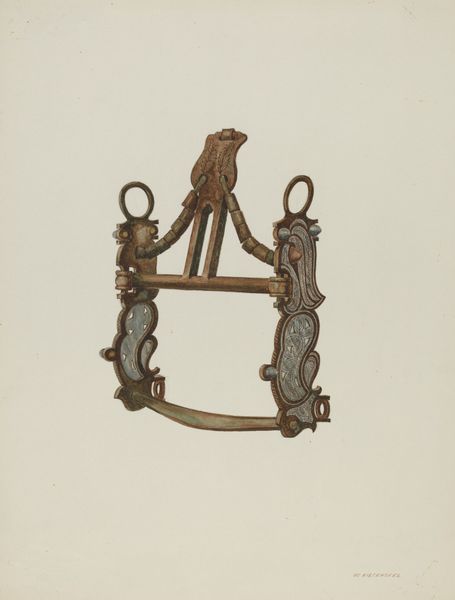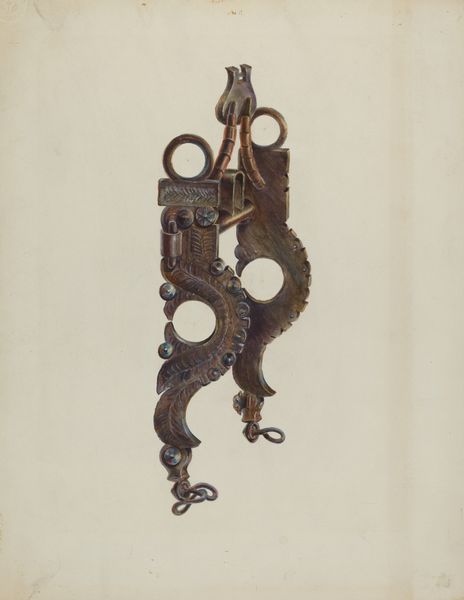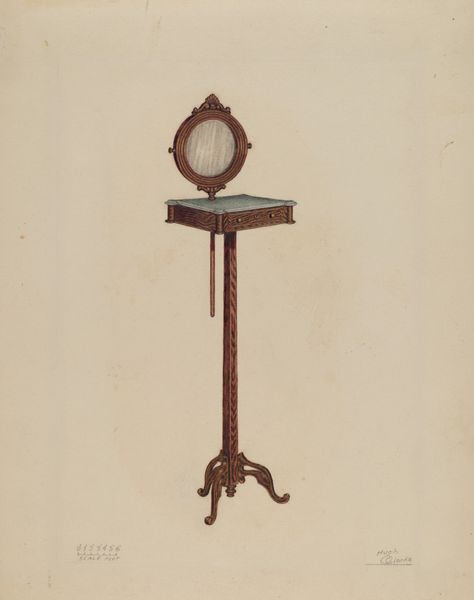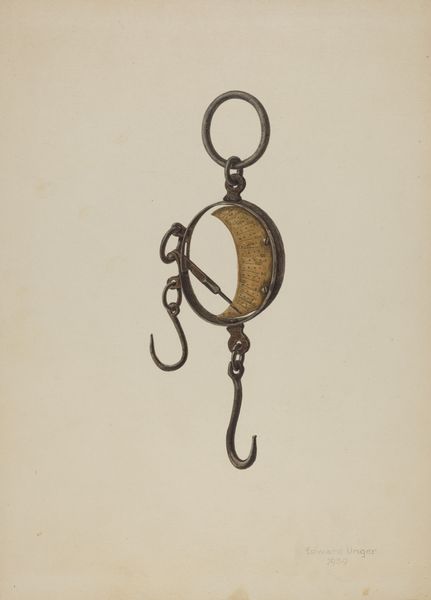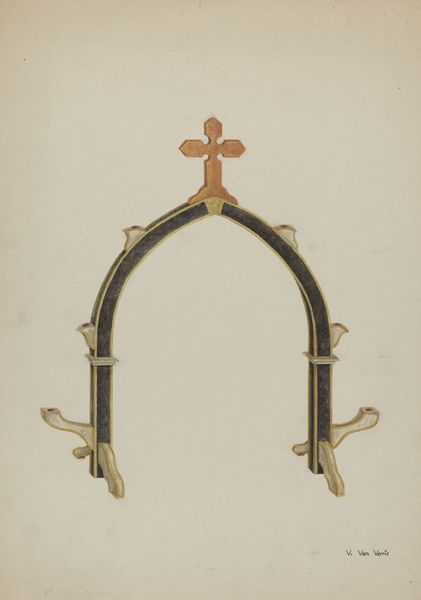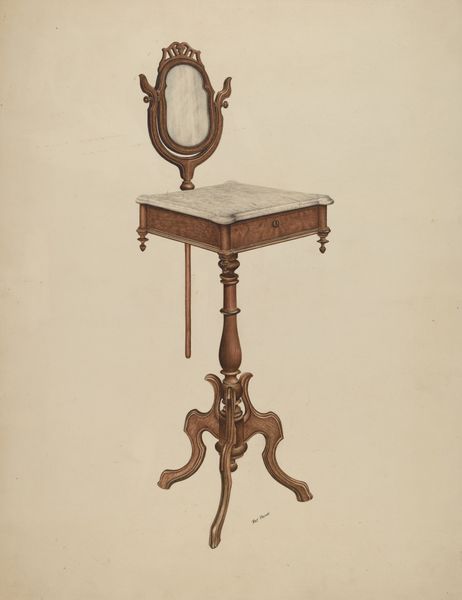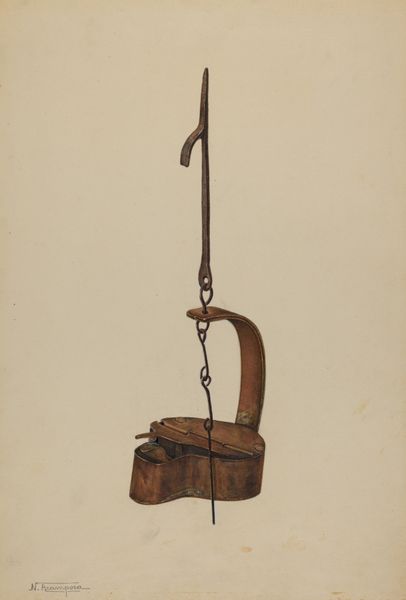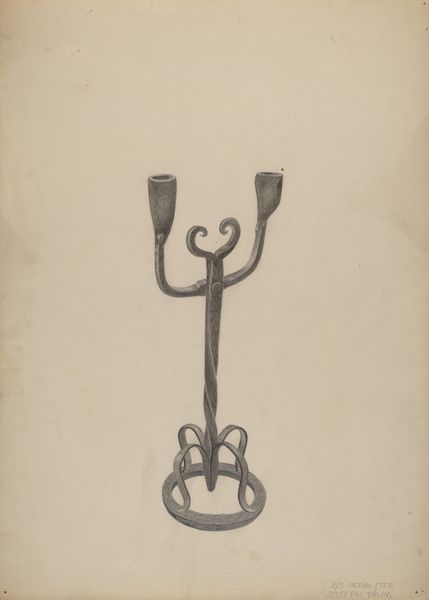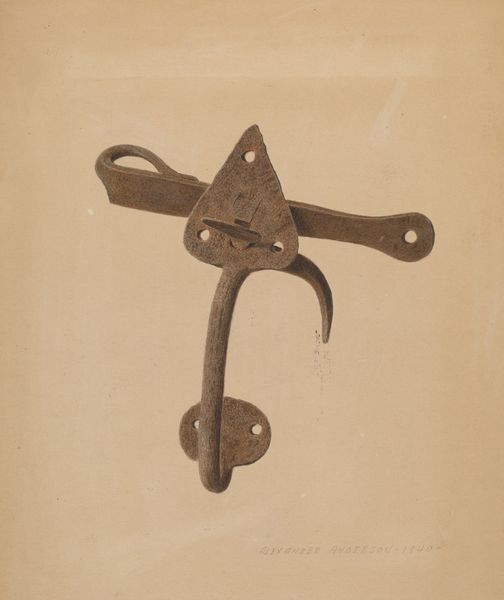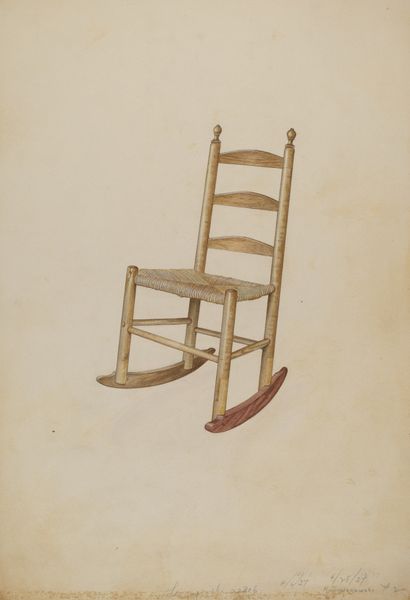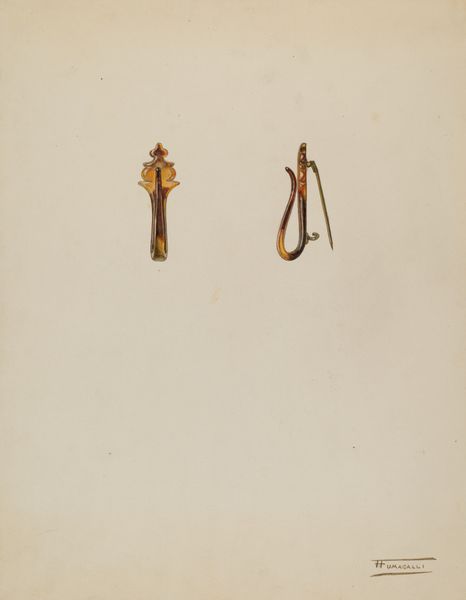
drawing, plein-air, watercolor
#
drawing
#
water colours
#
plein-air
#
watercolor
#
watercolour illustration
#
academic-art
#
watercolor
Dimensions: overall: 33 x 27.9 cm (13 x 11 in.) Original IAD Object: 10" long; 6" wide
Copyright: National Gallery of Art: CC0 1.0
Editor: This is Frank C. Barks’ "Eagle Bit," a watercolor drawing from around 1938. I'm struck by the detail, particularly the intricate designs on the bit itself. What is it that stands out to you? Curator: It's remarkable how Barks captures not just the form of the bit, but the weight of tradition embedded within it. Think about the eagle motif. What does the eagle signify in American iconography of that time? Editor: Well, it's a powerful symbol of freedom, strength, and national identity, isn’t it? Curator: Precisely. Now, consider the context. 1938 – the Dust Bowl, the Depression. This image connects to a longing for older values, self-reliance, and the open range. The bit itself, an instrument of control, is overlaid with aspirational imagery. The visual vocabulary speaks to a complex relationship between freedom and constraint. What does it say about humanity's urge for something that symbolizes liberation? Editor: That's fascinating! So, the eagle isn't just decoration; it's layered with meaning. Curator: It is a projection of desires. Note also how the medium, watercolour, often used for landscapes, here presents an object; Barks is deliberately conflating nature, craft and Nation. It invites reflection. Don’t you find it intriguing how the bridle shines bright within its otherwise simple context? Editor: I do, the composition isolates it as if to celebrate. I see how seemingly simple imagery can have so much layered significance. Thanks for clarifying all of that. Curator: It only requires us to start unraveling its threads. There’s an entire tapestry of associations in that one image.
Comments
No comments
Be the first to comment and join the conversation on the ultimate creative platform.
